MARIANI’S
January
14, 2006
NEWSLETTER
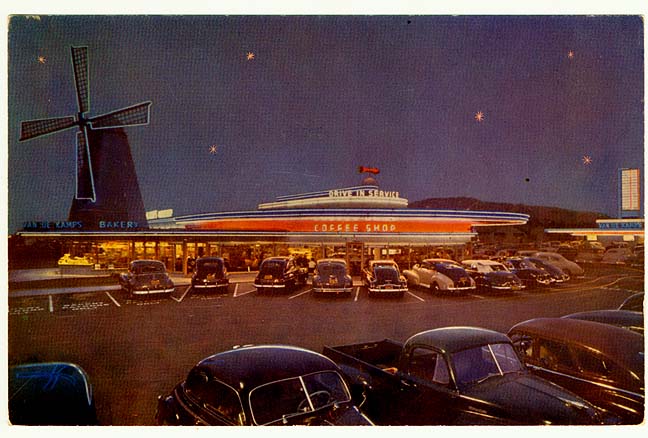
WEBSITE: To
go to my web site, in which I will update food
&
travel information and help link readers to other first-rate travel
& food sites, click on: home page
ARCHIVE: Readers may now access
an
Archive of all past newsletters--each annotated--dating back to July,
2003, by simply clicking on www.johnmariani.com/archive
.
SUBSCRIBE AND UN-SUBSCRIBE:
You may subscribe anyone you wish
to this newsletter--free of charge--by
clicking here.
In
This Issue
Ah, Venezia! by John Curtas
NEW YORK CORNER: COLORS by Mort Hochstein
NOTES FROM THE WINE CELLAR: Are Angelo Gaja’s White Wines Italy’s Greatest? by John Mariani
QUICK BYTES
Ah, Venezia!

Text and photos by John Curtas
One of my best examples of dubious excess is the 80 euro, 30-minute water taxi ride to or from
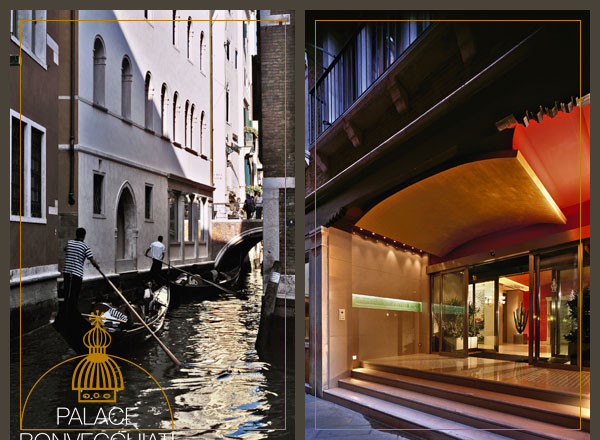 Pick the Hotel
Palace Bonvecchiati (San
Marco, Calle dei Fabbri 4680
Pick the Hotel
Palace Bonvecchiati (San
Marco, Calle dei Fabbri 4680 Photo courtesy of Palace Bonvecchiati.
Once your water taxi delivery to the door of your hotel is done, and the formalities of checking in are completed, there’s only one thing to do in Venice--get lost! That’s half the fun of being there, and if you don’t enjoy wandering aimlessly while having no idea where you are—all the time soaking up the unique sights and sounds of this mysterious place, then by all means take a tour boat. Despite all of the city's nooks and crannies, though, it is really impossible to get really lost. Everywhere you look there are signs pointing you to San Marco,
![[[\]](venice--IMGP0791.jpg)
And, early one morning, if those steps don’t lead you to the fish market, Mercato del Pesce al Minuto (right) in the shadow of the
What fascinates most about the seafood from the Venetian lagoon and beyond, besides their mineral-rich, intense flavors, is the sheer variety of fish and shellfish in the market—much of it unknown outside
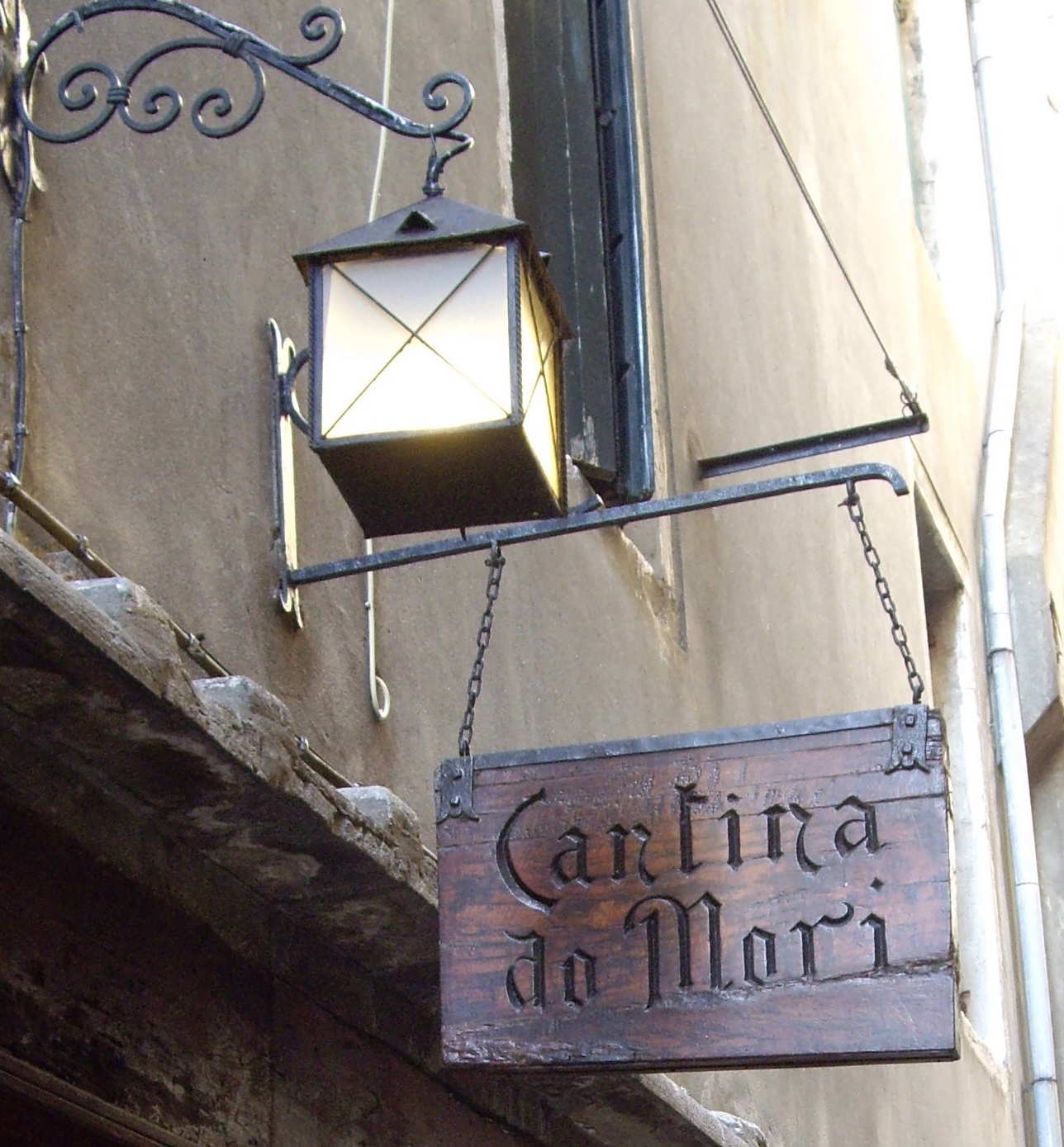 The only trouble with an early morning stroll among all
these edible creatures is that you’ll be hungry (and perhaps a bit
thirsty),
and it will probably be long before
The only trouble with an early morning stroll among all
these edible creatures is that you’ll be hungry (and perhaps a bit
thirsty),
and it will probably be long before It’s the ultimate cliché to say that all Americans go to Harry’s Bar when they come here—but they do--especially at night. Which is why I always drop in for lunch. Watching locals (some straight out of Central Casting: an aging dowager at one table, various elegantly-dressed business types along the walls, and a silver-haired, preternaturally tanned, medallion-clad, movie producer-type with a stunning, 20-something starlet at another) is a treat unto itself.
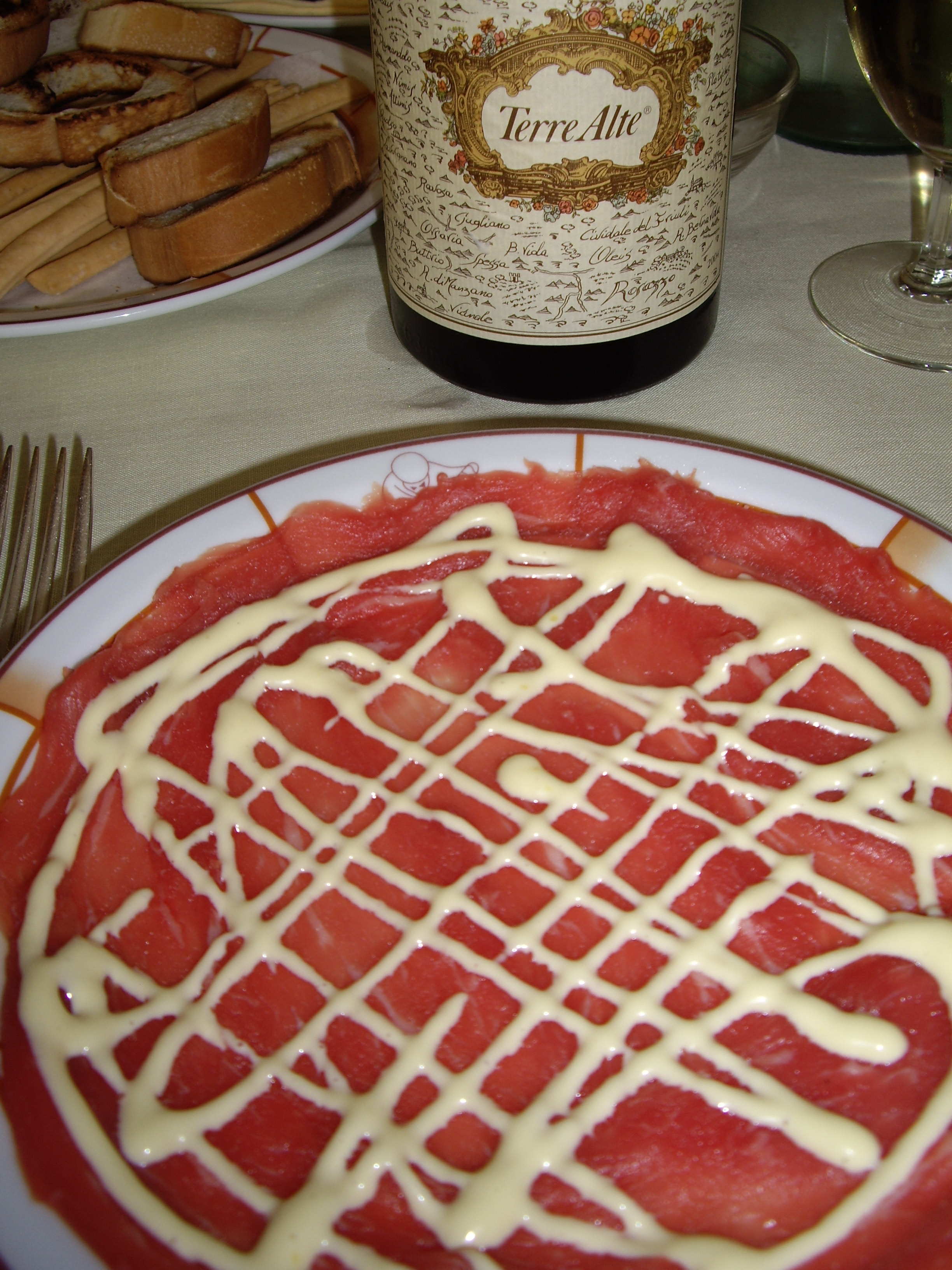 Score one of the low downstairs tables,
order a bottle of wine, then the perfect carpaccio (Harry's invented
it during an exhibition of Carpaccio's art in the city), and whatever
fish your captain suggests, and you will be treated
and feel
like one of the cognoscenti, and eat superb food at the same time. Some consider the décor drab and the
bill
outrageous for what is relatively simple fare. But
the ingredients are exquisite (except for the
bread, which is generally disappointing all over
Score one of the low downstairs tables,
order a bottle of wine, then the perfect carpaccio (Harry's invented
it during an exhibition of Carpaccio's art in the city), and whatever
fish your captain suggests, and you will be treated
and feel
like one of the cognoscenti, and eat superb food at the same time. Some consider the décor drab and the
bill
outrageous for what is relatively simple fare. But
the ingredients are exquisite (except for the
bread, which is generally disappointing all over Unlike other food-crazy towns like
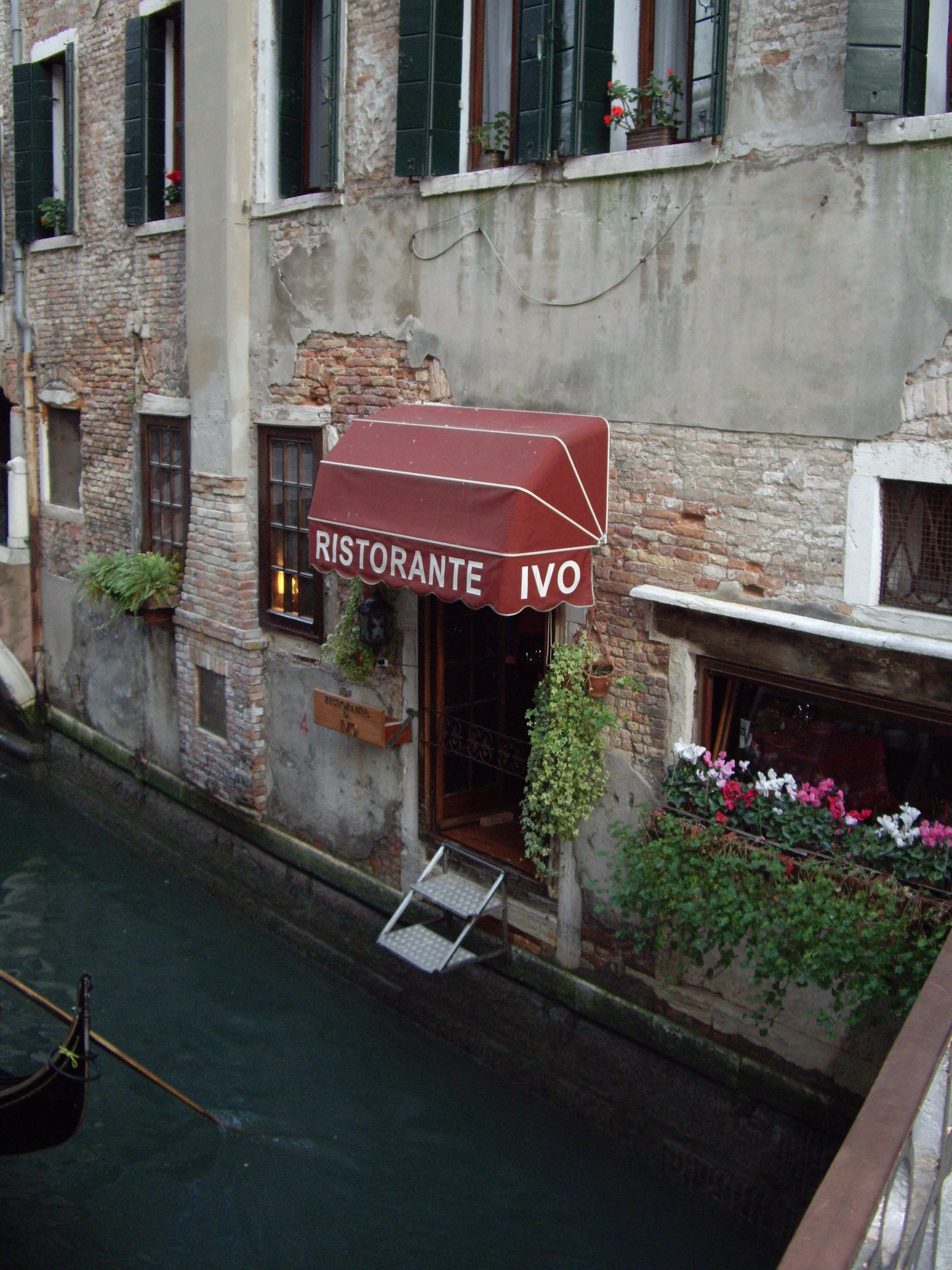 Da Ivo is easier to locate, on a relatively busy
walkway not far from the
Piazza San Marco. Despite the menu
written in four languages (usually the sure sign of a tourist trap), it
is one of
the best in
Da Ivo is easier to locate, on a relatively busy
walkway not far from the
Piazza San Marco. Despite the menu
written in four languages (usually the sure sign of a tourist trap), it
is one of
the best in 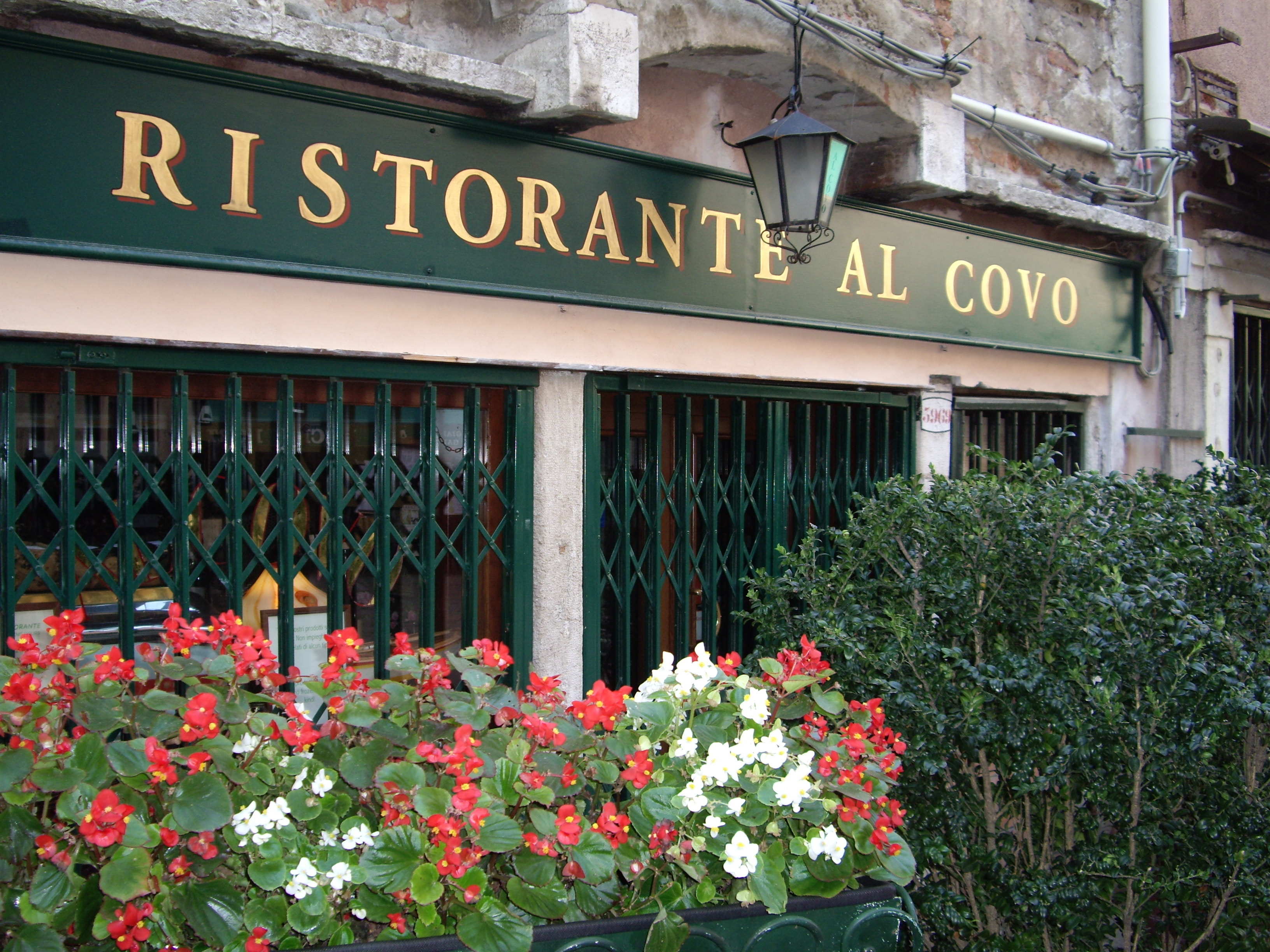
A note on pricing. Venice is very expensive to be sure, but there is a wide disparity between how better places price their wares for what is generally very similar cooking of identical raw ingredients. The fresh fish will always be the most expensive thing on any menu, and expect to pay at least 45 euros (or much more) for the catch of the day, just about anywhere. Amazingly though, antipasti and first (pasta) courses at a less touristy place like al Covo will be half the price (15-27 euros) of a similar dish ordered at places closer to Piazza San Marco—like Harry’s Bar and Da Ivo. Likewise, primi piatti (main courses) at al Covo and the distinctly out-of-the-way Antiche Carampane are well below 30 euros, when they start at 45 euros at da Ivo and 60 euros at Harry’s. Another specific (and common) example: at Antiche Carampane, spaghetti with spicy shellfish is 13 euros. Da Ivo gets 36 euros for a similar dish. Go figure.
Regardless of price, these places capture the magic of Venetian cuisine for me. The presentations are never fancy and the cooking is straightforward, but the excellence of technique and raw materials give you a whole new take on whatever you are eating. And no better example of this deceptive simplicity can be found than in the simple plate of chilled grapes brought to us towards the end of our second meal in three days at da Ivo. Called uva fragola, they are from Friuli, the same grapes used to make the house dessert wine, vino fragolino. Their flavor is intense, grapey and very sweet, without being cloying, and unlike any table grape I have ever tasted. “Only in
NEW YORK CORNER
COLORS
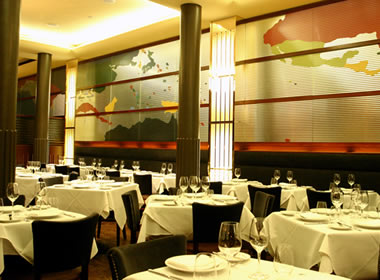
212-777-8443
www.colors-nyc.com
I was reminded of Lindy’s recently when I dined at Colors, a restaurant that could not be further from Broadway madness; in its quiet décor and respectful service of a staff, this too could become a legend. Colors, with a staff hailing from all parts of North and
But first the Colors cheesecake. Unlike the Lindy’s cake of my memory and many excellent American, French Italian and continental versions, unlike even those from Junior’s of
‘Nuff about cheesecake. The Colors story is more dramatic. Most of the crew who founded this restaurant in lower Manhattan were originally staffers at Windows on the World in the World Trade Center, destroyed on 9/11, taking with it 79 co-workers. More than 350 employees of Windows and about 13,000 other food service employees were displaced by that disaster as restaurant business in
The Windows survivors held weekly meetings, trading job leads and reinforcing each other. A few years ago, 50 of them joined in this unique, worker-owned and managed restaurant, which opened its doors in January, 2006. The workers put up 20% of the initial funding, with the bulk of financing, more than $1 million, coming from the nonprofit Restaurant Opportunity Center of New York (ROC) and an Italian food conglomerate.
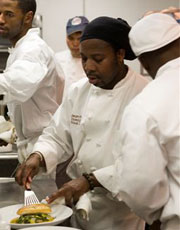 In this
cooperative arrangement, every participant
shares in the decision making so that someone like Rosario Ceia, a
bar
assistant and back waiter, sits on the board of directors with chef
Jean-Pierre Émy and other managers. Basic pay is $13.50 an hour,
a
level rare
in
In this
cooperative arrangement, every participant
shares in the decision making so that someone like Rosario Ceia, a
bar
assistant and back waiter, sits on the board of directors with chef
Jean-Pierre Émy and other managers. Basic pay is $13.50 an hour,
a
level rare
in More than 70 percent of all restaurant workers in
The restaurant is also unique in that specialists from the National Institutes of Health contributed to its design and visit regularly to insure that physical conditions are healthful for all workers.
All of that is secondary to what comes out of the kitchen and how the public is treated. Gold stars for Colors on both counts, with an extra star for the cheesecake. On a recent evening we concentrated primarily on light tapas dishes, started with crisp fried plantain chips, sharpened with ginger and paprika and accompanied by a chick pea puree and spicy tomato salsa. That dish originated in an African background.
We moved on toward
Papadam, normally associated with
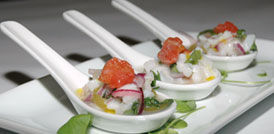
Guyanese empanadas in delightfully light pie crust came as rounds rather than crescents, stuffed with spicy pork and chicken.. Then there was a flavorful tuna taco, house-smoked toro tuna, dressed with mayonnaise and capers and paired with crispy taro chips. Colors makes a ceviche shooter, scallops and shrimps in tequila flowing over guava ice, a refreshing cool drink with a bit of a bite provided by red onion.
We moved on to main courses, opening with an exceptional octopus salad, fiery little charred octopi on piquillo pepper strips in smoked olive oil. Our palates returned to more normal temperature with a plate of braised short ribs accompanied by an only slightly spicy carrot puree and miniature asparagus spear. The meat was flavorful and very tender, reflecting the benefits of long, slow cooking.
Chef Jean-Pierre has a way with fish and he demonstrated that by raising the humble mahi-mahi to feature dish status, pan-searing it to a shiny-black crust, while still keeping it moist. I’ve tried that dish in many other places and it often arrives dry and unappealing, but not here. The fish is served with julienned, sautéed snow peas and has become a popular addition to the Colors winter menu.
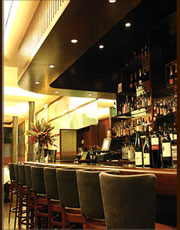 Rack of
lamb, two huge ribs, came with a pumpkin seed
crust, offering a nice contrast of crunchy bites into a succulent,
oversized
rib that would have pleased Henry VIII. It was accompanied by potatoes
almost
overdosed with truffles and sautéed wild mushrooms, but then,
you
can never get enough truffles, and Jean-Pierre is a generous provider.
Rack of
lamb, two huge ribs, came with a pumpkin seed
crust, offering a nice contrast of crunchy bites into a succulent,
oversized
rib that would have pleased Henry VIII. It was accompanied by potatoes
almost
overdosed with truffles and sautéed wild mushrooms, but then,
you
can never get enough truffles, and Jean-Pierre is a generous provider.For kickers, competing with that great cheesecake, we enjoyed a perfectly textured crème brûlée with miniature chocolate chip cookies and egg nog for the season. As with everything else at Colors, the flavoring is never ordinary and in this case, the eggnog was spiced and tarted up with fresh, kitchen-ground nutmeg, it made a nice ending.
Appetizers at Colors run $7-$14, main courses $21-$29.
NOTES FROM THE WINE CELLAR
There is little debate among connoisseurs that Piedmont’s most famous winemaker, Angelo Gaja, makes some of the greatest red wines in Italy—magnificent barbarescos and barolos. But not nearly as much attention has been paid to his white wines. So let me state right away that I believe his whites to be the greatest in
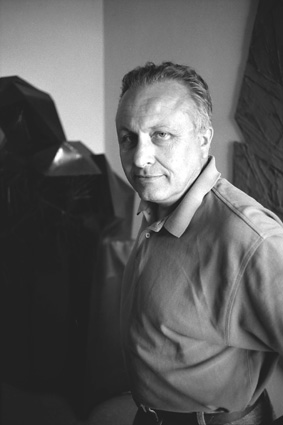 Except for a handful of prestigious white
burgundies like Meursault and Montrachet, no other white wines can
match the
power, finesse, and elegance of Gaja’s chardonnay-based whites. In
Except for a handful of prestigious white
burgundies like Meursault and Montrachet, no other white wines can
match the
power, finesse, and elegance of Gaja’s chardonnay-based whites. In It was in fact Gaja, 66, whose family has had vineyards in
Principal among many innovations he made in Italian viniculture was to age both his red and white wines in French barriques.
With 250 vineyard acres in Piedmont (he also has holdings in Tuscany), Gaja is also constantly experimenting, making it difficult for his avid fans to keep up with all the different wines he may be making in any given year. A look at his American importer’s website, Paterno Wines (www.paternowines.com), lists no less than 20 different wines, most of them reds made from the local nebbiolo grape, many with whimsical dialect names, like Darmagi, which means “what a pity!”—which is what his father said when Angelo tore out nebbiolo from an old vineyard and replanted it with cabernet sauvignon.
He only makes three white wines (not counting grappas), two chardonnays, and one sauvignon blanc. Rossj-Bass, named after his youngest daughter Rossana, has a touch of sauvignon blanc that gives very pleasing vegetal notes to the opulent fruit and the marvelous balance of acids and minerals.
Alteni di Brassica is 100 percent sauvignon blanc, another varietal Gaja has championed in a region better known for traditional whites like erbaluce, roero arneis, and cortese di gavi. John Ragan, wine director of
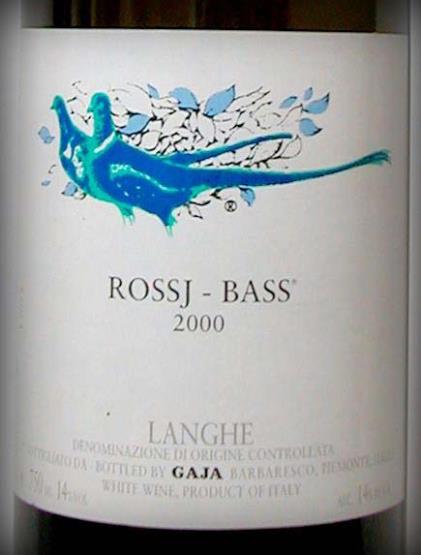
But it is Gaja’s Gaia & Rey (named after his daughter Gaia and grandmother Clotilde Rey), which he first planted in 1979, releasing his first vintage in 1984, that is the most prestigious of his white wine labels. Gaja, a fiery, square-jawed, blue-eyed Italian who speaks excellent English with a strong Piemontese accent, makes Gaia & Rey with the same commitment and passion he devotes to his barbarescos and barolos.
It is 100 percent chardonnay, fermented in stainless steel tanks for four weeks with natural yeasts, finishing at a hefty 14 percent alcohol, then aging 6-8 months in barrique to give it a roundness, fullness, and toasty vanilla notes.
The wine is always quite complex, beginning in the nose, which has the aromas of caramel, oak, and honey. These follow on the palate, opening up to floral notes and a long, satisfying finish that is sustained in every glass you drink.
Getting hold of enough Gaia & Rey to drink is, however, a problem. Winestore owners and restaurateurs wring their hands in anticipation of the next vintage—not because they wonder how good it will be but because they worry how little they might receive. Only about 3,600 bottles of the 2004 will be coming to the
My search of the quite comprehensive www.wine-searcher.com turned up only a handful of sources for any of the wines. Probably your best chance of finding the wines is at www.italianwinemerchant.com, which currently carries a few in earlier vintages. If you do locate a bottle of Gaia & Rey, expect to pay around $130-$160 a bottle—which is a lot less than a white burgundy like Domaine Romanée- Conti’s Le Montrachet at $1,950 a bottle.
The new allocations for Gaja wines will be announced soon, so if you want to taste
John Mariani's weekly wine column appears in Bloomberg Muse News, from which this story was adapted. Bloomberg News covers Culture from art, books, and theater to wine, travel, and food on a daily basis, and some of its articles play of the Saturday Bloomberg Radio and TV.
"If you want to create an impression of class in your restaurant, just drop in a little French. Unfortunately, some French words aren’t easy for English-speakers to handle. Take “prix fixe,” which means “fixed price” — a full meal of several courses offered for a set tab. Neat concept. Not easy to spell and pronounce. I’ve seen it rendered as “prefix” and pronounced as 'pricks fix,' but nooooo: Make it “pree feese,” and you’ll hear no snobby Frenchmen snickering at you."--"Leo's Eat and Blog: The Fix Is In" by Robin Garr
SAY, AH....
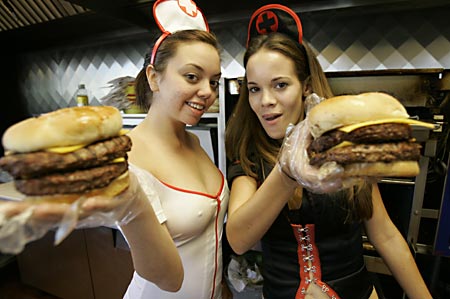
In Tempe, AZ, The Heart Attack Grill (which serves items like the Quadruple Bypass Burger-- 4 1/2--pound beef patties, 4 pieces of cheese and a mound of bacon, with Flatliner Fries) has angered local hospital nurses because management dresses its waitresses in naughty nurse uniforms, who, if "patients," as customers are called, finish a Triple or Quadruple Bypass, will push them to their cars in wheelchairs. The Arizona attorney general's office and a national nursing group have demanded owner Jon Basso stop using the outfits. "If anything, I think it glorifies nurses to be thought of as a physically attractive and desirable individual," Basso answered back. "There's a Faye Dunaway, Florence Nightingale hipness to it. None of the women actually have any medical training, nor do they attempt to provide any real medical services. It should be made clear that the Heart Attack Grill and its employees do not offer any therapeutic treatments (aside from laughter) whatsoever."
QUICK BYTES
* On Jan. 19 at NYC’s Havana Central at The West End owner
* On Jan. 20 & 21 Mohegan Sun in Uncasville, CT, will hold SUN WINEFEST 2007, with executive chef Michael Luboff and chefs Todd English, Jasper White, Roberto Donna, Susur Lee, Daisy Martinez, Mary Sue Milliken, Sara Moulton, Walter Potenza, Luis Bollo, Jimmy Burke, Michael Ginor, Chris Schlesinger, Kim Canteenwalla, Ihsan Gurdal, Lydia Shire, Mary Ann Esposito, Floyd Cardoz, Douglas Rodriguez, and Aaron Sanchez, joined by Drew Nieporent of the Myriad Restaurant Group and Jill Cordes of HGTV and The Food Network, and wine experts Stefano Girelli, Casa Girelli; Leonardo LoCascio, Winebow; Saskia Prüm, S.A. Prüm Winery; Kate MacMurray, MacMurray Ranch; Paul Hoffman, Medusa Winery; and Walter Schug, Schug Winery. Tix are $175 pp for the Dine-Around event on Saturday, with a portion to benefit Share Our Strength. Visit www.sunwinefest.com
* From Jan 22-25 more than 75
* On Jan. 24 Tony Foreman and Cindy Wolf will hold a wine tasting
* On Jan. 24 at Restaurant Jean-Louis in
* On Jan. 31 Martini House in St. Helena, CA, is once again holding its 4-course “Wine Geeks and Mushroom Freaks Dinner,” with local winemakers pairing their wines with Chef Todd Humphries’ mushroom creations, featuring winemaker Heidi Peterson Barrett, and Patrick Hamilton, Foragers’ Report columnist for the Mycological Society of San Francisco and the Sonoma County Mycological Association. $65 pp, with wines $125. ( All menu items available À La Carte) Call 707- 963-2233; visit www.martinihouse.com
* In Palm Beach at The Breakers, L'Escalier's Master Sommelier Virginia Philip has invited celebrated winemakers from around the world to present two extraordinary evenings of food and wine pairings, with a tasting reception and 4-course dinner prepared by gifted culinary team lead by Chef Kevin Ives: Feb. 18, Silver Oak Winery, with VP Tom Johnson.
* From Feb.14-18, The Island Hotel Newport Beach offers a romance packages for the month of February: Chef Bill Bracken's 5-course "Menu Designed with Him and Her in Mind." After dinner, couples will be treated to a performance by singer, pianist and songwriter Kristina Pruitt in Gardens Lounge. $250 per couple with overnight accommodation package starting at $545. Call 888-321-4752; www.theislandhotel.com.
* One&Only Maldives at Reethi Rah is offering various romantic packages for Valentine’s Day: Private Sandbank Dinner—Take a dhoni boat to a private sandbank and sip Champagne while sailing through the neighboring coral islands, followed by a private oceanfront barbecue of native seafood cooked by your personal chef and waiter. $2,000 per couple. . . .Luxury Catamaran Dinner Charter--Drop anchor at any one of the neighboring islands while savoring the local cuisine from your on-board chef. $1300 per couple . . . .Middle Eastern Sunset Barbeque—Enjoyed at the resort at the beach while reclining on Arabian rugs in front of your beachfront villa while your personal butler prepares your meal. For morning romance, call upon villa staff to create a
* From Feb. 22-March 4, the 8th annual Montréal HIGH LIGHTS Festival, will take place with a performing arts series, gastronomic and wine tasting activities, and light shows. The featured region this year is
MARIANI'S VIRTUAL GOURMET NEWSLETTER is published weekly. Editor/Publisher:
John Mariani. Contributing Writers: Robert Mariani, Naomi
Kooker, Kirsten Skogerson, Edward Brivio, Mort
Hochstein, Suzanne Wright. Contributing
Photographers: Galina Stepanoff-Dargery, Bobby Pirillo. Technical
Advisor: Gerry McLoughlin.
Any of John Mariani's books below
may be ordered from amazon.com by clicking on the cover image.
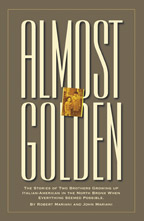 My
newest book, written with my brother Robert Mariani, is a memoir of our
years growing up in the My
newest book, written with my brother Robert Mariani, is a memoir of our
years growing up in the For those of you who don't think of the Robert and I think you'll enjoy this very personal look at our --John Mariani |
 |
 |
 |
 |
 |
 |
copyright John Mariani 2007
